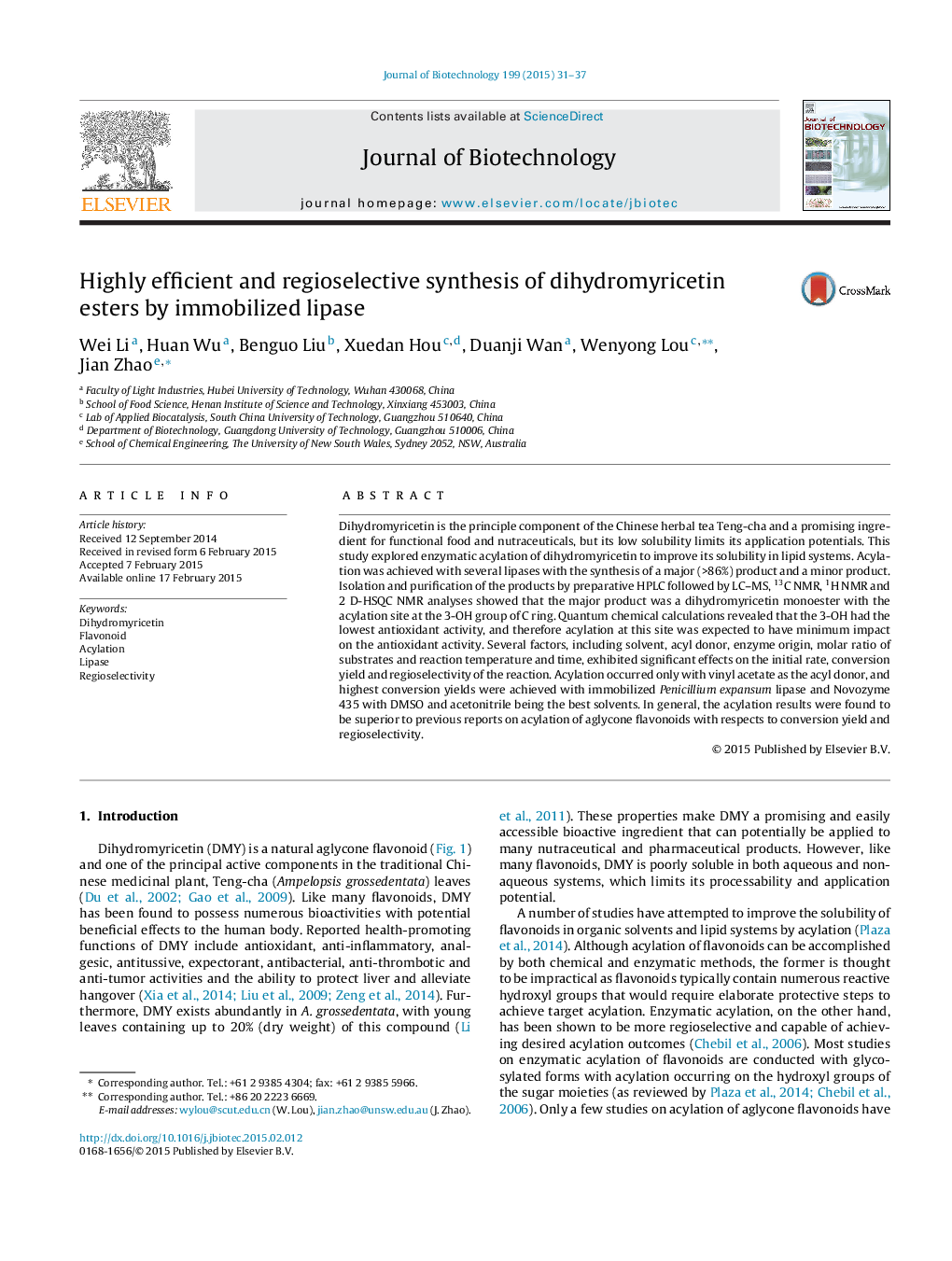| Article ID | Journal | Published Year | Pages | File Type |
|---|---|---|---|---|
| 6491215 | Journal of Biotechnology | 2015 | 7 Pages |
Abstract
Dihydromyricetin is the principle component of the Chinese herbal tea Teng-cha and a promising ingredient for functional food and nutraceuticals, but its low solubility limits its application potentials. This study explored enzymatic acylation of dihydromyricetin to improve its solubility in lipid systems. Acylation was achieved with several lipases with the synthesis of a major (>86%) product and a minor product. Isolation and purification of the products by preparative HPLC followed by LC-MS, 13C NMR, 1H NMR and 2 D-HSQC NMR analyses showed that the major product was a dihydromyricetin monoester with the acylation site at the 3-OH group of C ring. Quantum chemical calculations revealed that the 3-OH had the lowest antioxidant activity, and therefore acylation at this site was expected to have minimum impact on the antioxidant activity. Several factors, including solvent, acyl donor, enzyme origin, molar ratio of substrates and reaction temperature and time, exhibited significant effects on the initial rate, conversion yield and regioselectivity of the reaction. Acylation occurred only with vinyl acetate as the acyl donor, and highest conversion yields were achieved with immobilized Penicillium expansum lipase and Novozyme 435 with DMSO and acetonitrile being the best solvents. In general, the acylation results were found to be superior to previous reports on acylation of aglycone flavonoids with respects to conversion yield and regioselectivity.
Related Topics
Physical Sciences and Engineering
Chemical Engineering
Bioengineering
Authors
Wei Li, Huan Wu, Benguo Liu, Xuedan Hou, Duanji Wan, Wenyong Lou, Jian Zhao,
